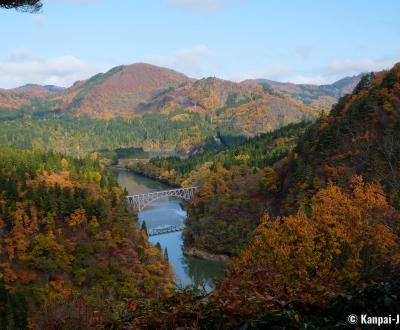Oku Aizu
The Beautiful Distant Valley of Tadami River
Oku Aizu is a valley formed by Tadami River, in the heart of Echigo Mountain range, attached to Fukushima prefecture in Japan. Distant 200km north from Tokyo and easily reachable from Aizu-Wakamatsu City, this lovely rural area is home to a majestically rough nature.
In between Niigata and Fukushima prefectures, the region of Oku Aizu is not to be outdone by other areas, such as the popular Iya Valley on Shikoku island, in terms of beauty. Back in the inner mountains of Echigo, southern Tohoku, Oku-Aizu valley stretches along Tadami River and is home to great natural landscapes. It also shelters seven rural villages, with characteristic roofs made with painted tiles. The tiles’ colors were used to display the inhabitants’ wealth, with variations ranging from blue to red, and the darkest hues to show the wealthiest households. Far from all urban areas, time goes by slowly following the rhythm of seasons.
In this overview of the valley, let us introduce some of the most interesting places to visit.
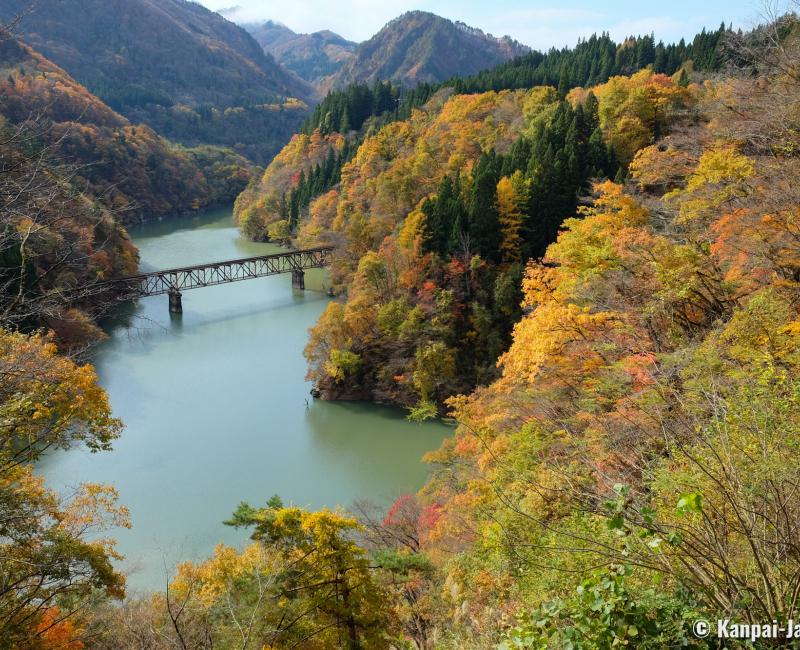
The railway bridges on Tadami River
The region is served by the JR Tadami Line, a local train running along the river for about 135 kilometers between Aizu-Wakamatsu and Koide (Uonuma) stations. However, part of the service has been interrupted since 2011 and replaced by bus between Aizu Kawaguchi and Tadami (reopening scheduled in 2022).
While one of the pleasant ways of discovering the valley, the scenic train is an essential part of Oku Aizu’s most famous landscapes. Drive on the National Road 252 to reach the various vantage points on the railway bridges crossing the river. Racing trains reflect on the clear and quiet water of the gorge.
In Mishima village, the view on No. 1 Tadami River Bridge (第一只見川橋梁展望台) is certainly the most remarkable. The panorama on the forest mountains and the arch bridge nestled in the valley are just wonderful and so typically Japanese. This observation point is nice to enjoy the variations of the trees’ foliage all year round: from the spring 🌸’s soft green to a deeper green in summer, and finally warm colors in autumn. In winter the site is covered in a dazzling white snow coat.
From the road access to the vantage point by Michi-no-Eki Ozekaido Mishima-juku, where you can park your car 🚙 before walking up for about ten minutes. The development of facilities, such as an elevator for persons with reduced mobility, is under discussion, with respect of the environment and the site in mind.
Each bridge on JR Tadami Line has a unique architecture and curious travelers, or Japanese trains 🚅 amateurs, are encouraged to stop by all observatories on the bridges.
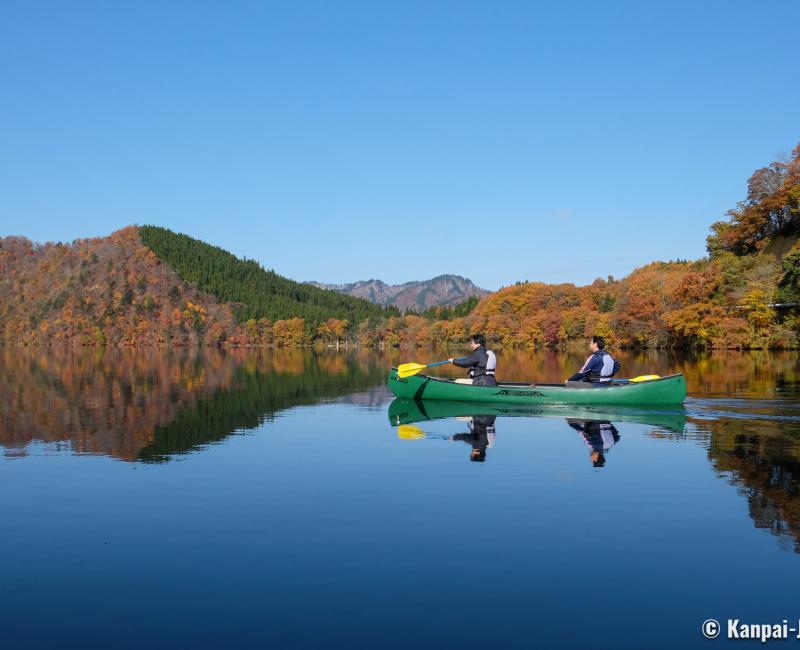
Lake Numazawa and its woodlands
As the symbol and main attraction of Kaneyama village, Lake Numazawa (沼沢湖) was naturally formed by several volcanic eruptions. It now offers a dramatic viewpoint on the surrounding nature. One can tirelessly watch these mountain sceneries where forest is predominant. Wildlife is thriving among the various essences of birch, pine, and oak trees, and it is fun to try observing and listening to it.
Kenko Hoshi, a local photographer passionate about the beauty of his home region, can ride with you on a small boat to navigate around the lake. Hoshi is working toward the development of tourism in Oku Aizu thanks to, among other things, the appraisal he received for his wonderful pictures of the JR Tadami Line.
Kenko Hoshi is the perfect guide to better understand and enjoy what the valley has to offer. He recommends settling on the lake’s shores for a camping session in summer. Dom’Up, a glamping facility (now definitively closed), even offered to stay in two furnished huts, one of which is suspended in the trees. On site, several activities are available such as paddle or canoe trips or renting a group barbecue.
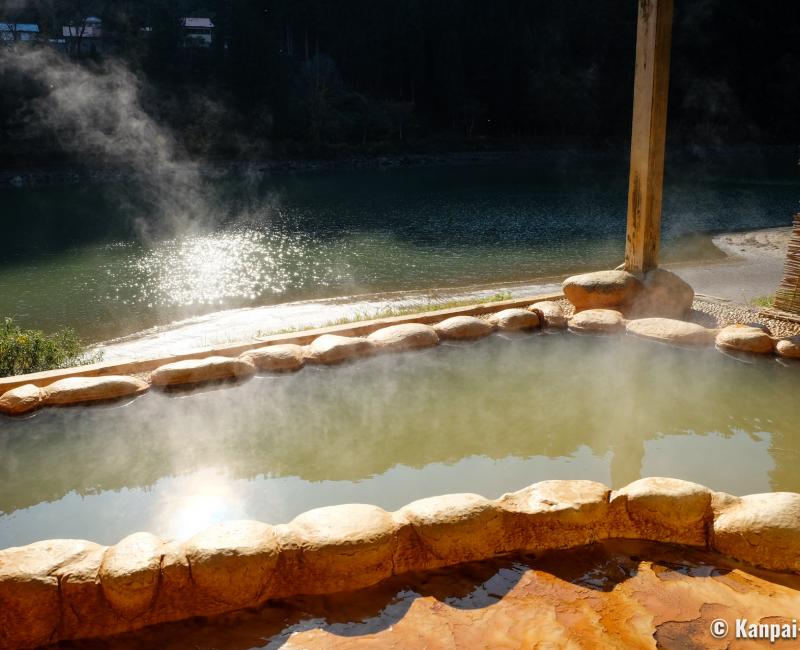
Then, moving away from the lake towards Tadami river, Hayato Onsen ♨️ Tsuru no Yu (早戸温泉つるの湯) is open for day-trip visitors and serves lunch with a delicious katsudon breaded pork, followed by a relaxing time in one of the rotenburo outdoor hot baths. The permanent view on the mountains is appealing and this is where Kenko Hoshi will offer to bring you next.
Cross the river again to discover Mugenkyo (霧幻峡), a ghost village forsaken by its inhabitants after it was destroyed by a mud slide in April 1964. The two-hours walk in the forest is like exploring and looking for ruins: Jizo statues, shrines’ pavilions, a 300-year-old traditional house. This stroll out of time while pleasant, reminds us the respect due to the nature and the necessity to keep an humble attitude toward it.
Kaneyama village is also renowned for its natural sparkling water Oshio, which is free to collect provided having one’s own container.
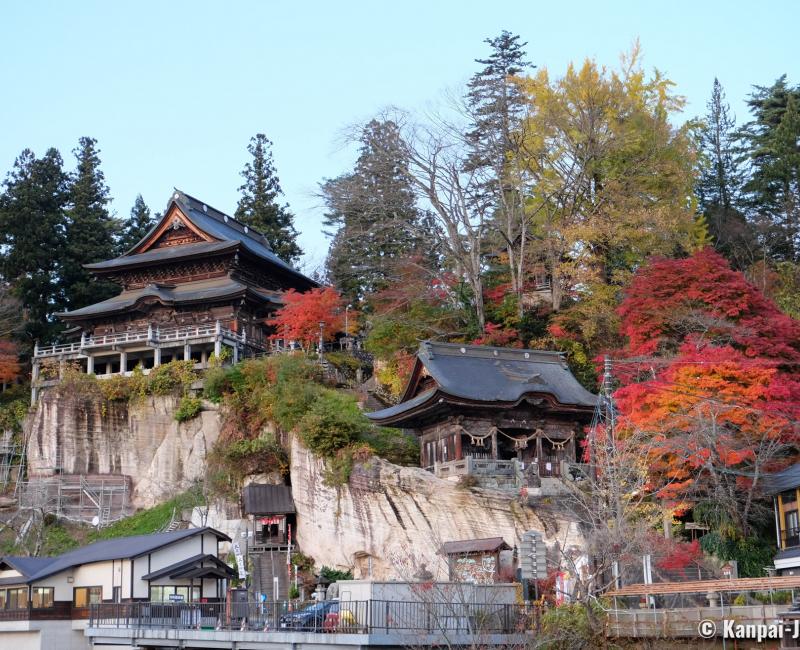
Yanaizu village in autumn
Yanaizu is a rural and picturesque village to discover all year round and especially during the koyo 🍁 period, when the maple trees’ leaves redden and bring further the beauty of each landscape.
Colors are already beautiful along the short hike on the Kubota 33 Kannon pilgrimage (久保田三十三観音) located in the periphery of the small town. The path in the forest is lined with 33 stone slabs picturing Kannon Bosatsu. One of them, nicknamed Maria Kannon, is engraved with a Christian cross, as a testimony of the hidden Christians of Japan during the Edo period (1603 – 1868) when their faith was prohibited.
From Aizu-Yanaizu's little station, it is easy to wander in the town where most of the interesting sites are gathered around its highlight: the 1.200 years old Enzo-ji temple (福満虚空蔵菩薩圓藏寺). Built on a rocky hill, it stands majestically above Yanaizu and its access is a quite steep stairway.
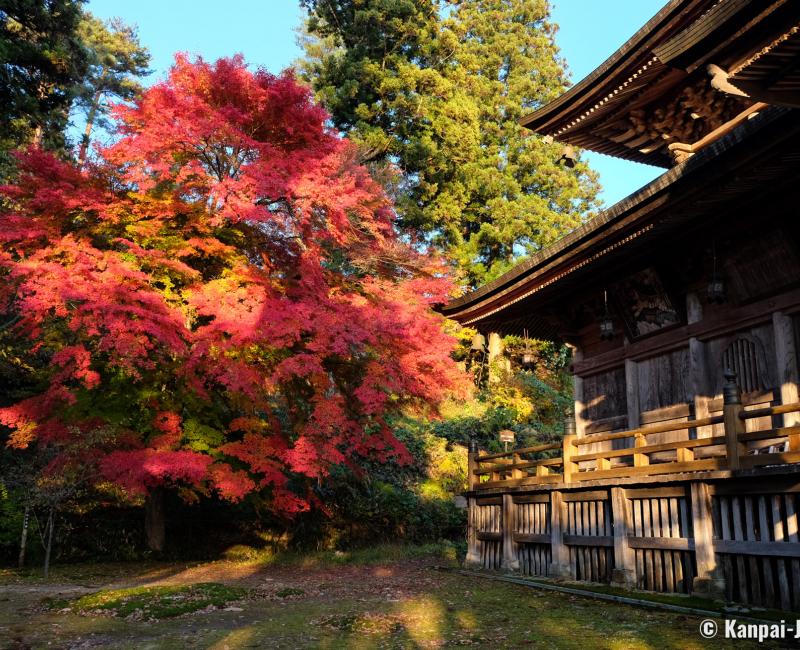
The view on the various pavilions, of untreated and sculpted wood, and the huge maple trees colored in red and orange, is really worth the effort. The temple shelters a rare image of Kokuzo Bosatsu that the legend attributed to Kobo Daishi (Kukai) himself. Akabeko, the famous red cow and mascot of Yanaizu can be found in the temple’s grounds and everywhere in the village and is the lucky charm of Aizu area. The temple’s yearly festival, named Nanokado Hadaka-mairi is held each January 7 and is unique thanks to a competition of rope climbing involving undressed village men.
At the entrance of Enzo-ji, a beautiful traditional building named Uchidaya (内田屋) is standing. This 140 years old ryokan inn was primarily used as a shukubo, a lodging for pilgrims passing through the temple’s Monzen-machi district. Nowadays, the address is famous for its authentic menu including horse sashimi, in an old-fashioned yet well-tended decor.
A little bit further, from the lobby of Kiyoshi Saito Museum of Arts (斎藤清美術館), visitors can enjoy a beautiful view on Yanaizu’s countryside and rice paddies. The museum, only hosting temporary exhibitions, is by itself an aesthetic architectural place and a pleasant discovery at the end of the day.
Before leaving, don’t forget to taste Awamanju, the delicious regional confectionary that can be enjoyed warmed or cold. This small yellow cake is prepared with a red bean paste coated with a mix of mil and glutinous rice dough and steamed.
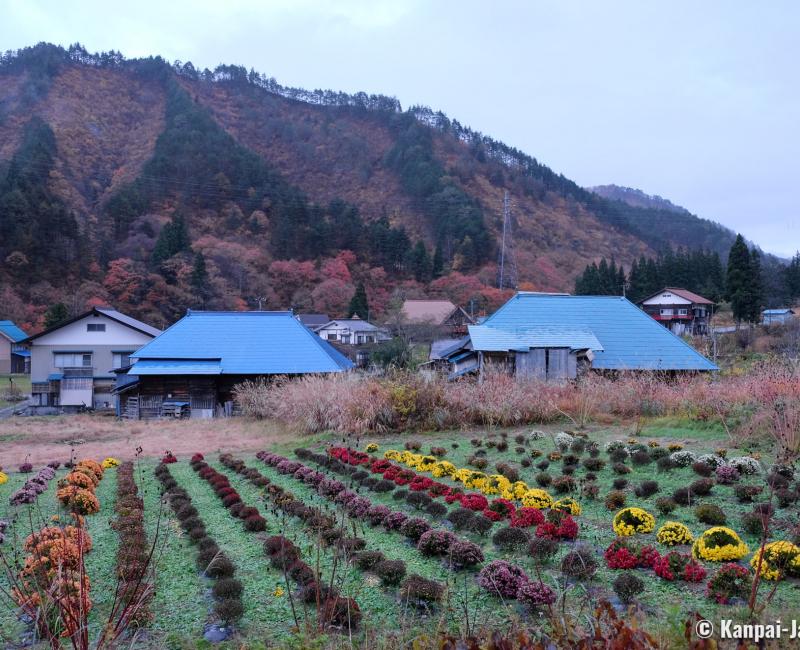
With plenty of gorgeous mountain landscapes, the region of Oku Aizu can also be explored on a human scale, through its villages, and by discovering the local crafts and meeting its inhabitants.

